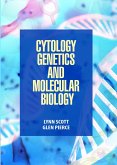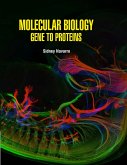Membrane structures are spatial structures made out of tensioned membranes. The structural use of membranes can be divided into pneumatic structures, tensile membrane structures, and cable domes. In these three kinds of structure, membranes work together with cables, columns and other construction members to find a form. Peripheral membrane proteins are found on the outside and inside surfaces of membranes, attached either to integral proteins or to phospholipids. Unlike integral membrane proteins, peripheral membrane proteins do not stick into the hydrophobic core of the membrane, and they tend to be more loosely attached. Cells are the smallest units of life. They are a closed system, can self-replicate, and are the building blocks of our bodies. In order to understand how these tiny organisms work, we will look at a cell's internal structures. We will focus on eukaryotic cells, cells that contain a nucleus. Prokaryotic cells, cells that lack a nucleus, are structured differently. The cell membrane is an extremely pliable structure composed primarily of back-to-back phospholipids (a "e;bilayer"e;). Cholesterol is also present, which contributes to the fluidity of the membrane, and there are various proteins embedded within the membrane that have a variety of functions. Today, the DNA double helix is probably the most iconic of all biological molecules. It's inspired staircases, decorations, pedestrian bridges and more. A vesicular transport protein, or vesicular transporter, is a membrane protein that regulates or facilitates the movement of specific molecules across a vesicle's membrane. As a result, vesicular transporters govern the concentration of molecules within a vesicle. Plants require higher amounts of nitrogen as it is important in their structure and metabolism. Nearly, 80 per cent of the earth's atmosphere is composed of nitrogen, bathing the entire plant world, but unfortunately most plants cannot utilize it in its elementary form. The book is a meticulously organized and richly illustrated work, useful both for teaching and for reference. It is intended to serve plant biology and related disciplines, ranging from molecular biology and biotechnology to biochemistry, cell biology, physiology, and ecology. Researchers in the pharmaceutical, biotechnology, and agribusiness industries will find a wealth of information inside.
Dieser Download kann aus rechtlichen Gründen nur mit Rechnungsadresse in A, B, BG, CY, CZ, D, DK, EW, E, FIN, F, GR, HR, H, IRL, I, LT, L, LR, M, NL, PL, P, R, S, SLO, SK ausgeliefert werden.









